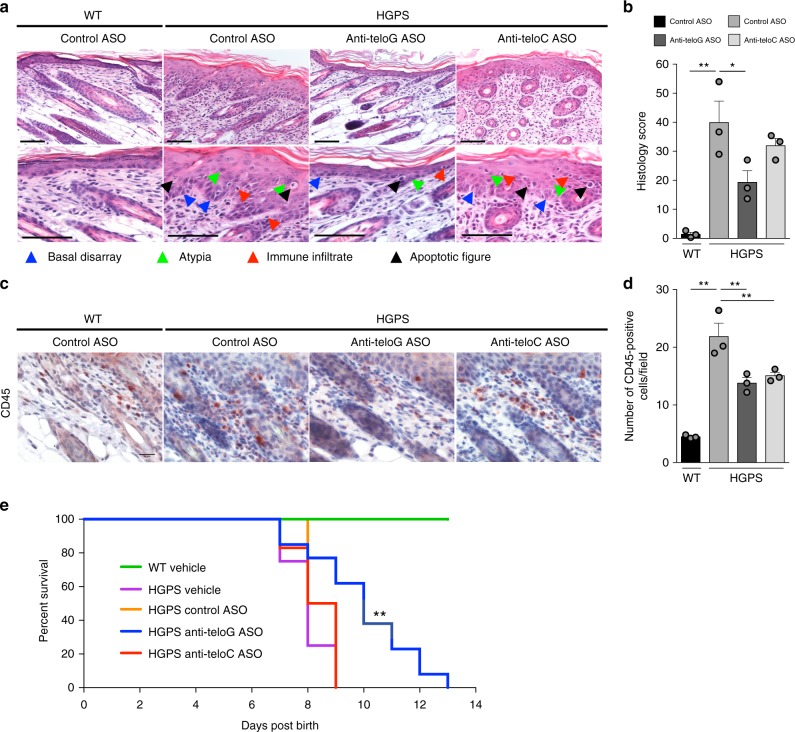Fig. 4.
Systemic delivery of tASOs in a mouse skin model of HGPS reduces skin inflammation and degeneration and extends maximal and mean animal survival. a–d Mice subjected to systemic delivery of the indicated ASOs were sacrificed at post natal day 6 for histopathological characterization. a Hematoxylin and eosin stained skin sections of mice treated with the indicated ASOs. Scale bars, 100 μm. b Histopathology scores represent the cumulative analysis of the individual parameters shown in Supplementary Fig. 4b–f. Error bars represent the s.d. *P < 0.05, **P < 0.01; one-way ANOVA with multiple-comparison post-hoc corrections. c Mouse skin sections were immunohistochemically stained for CD45. Scale bar, 50 μm. d Quantifications of images shown in c. Error bars represent the s.d. **P < 0.01; one-way ANOVA with multiple-comparison post-hoc corrections. Color scales are assigned as for b. e Kaplan–Meier curve of wild type (WT) mice treated with vehicle (n = 16) and progerin-expressing mice treated with vehicle (n = 8), control (n = 4), anti-teloG (n = 13), or anti-teloC ASOs (n = 7). **P < 0.01. Kaplan–Meier survival analysis. Source data are provided as a Source Data file

